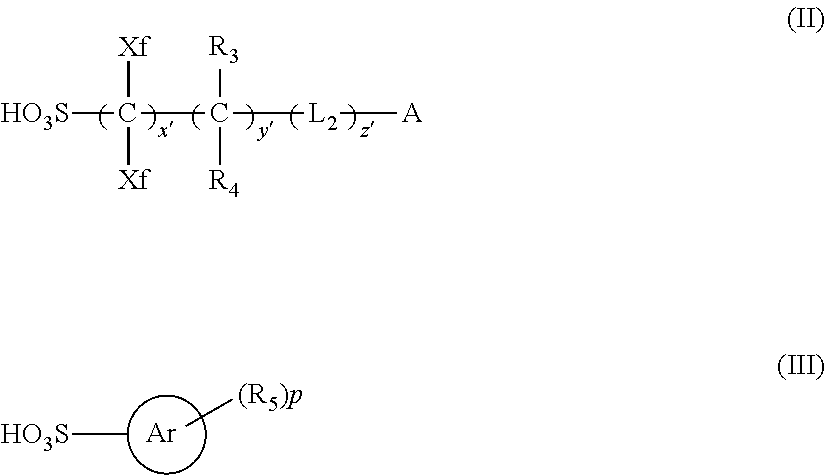Pattern forming method, chemical amplification resist composition and resist film
a technology of resist composition and pattern, applied in the field of pattern forming method, chemical amplification resist composition and resist film, can solve the problems of difficult selection of difficulty in finding the appropriate combination of resist composition, and difficulty in finding the optimal combination of resist composition and low-polarity developer, etc., to achieve the effect of small line width variation and excellent resolution
- Summary
- Abstract
- Description
- Claims
- Application Information
AI Technical Summary
Benefits of technology
Problems solved by technology
Method used
Image
Examples
examples
[0667]The present invention is described below by referring to Examples, but the present invention should not be construed as being limited thereto.
synthesis example
Synthesis of Acid Generator
Compound (PAG-14):
[0668]Aluminum chloride (6.83 g) was added to 20.0 g of benzene, and the mixture was stirred under cooling at 3° C. Thereto, 40.4 g of cyclohexyl chloride was slowly added dropwise. After the dropwise addition, the mixture was stirred at room temperature for 5 hours and then poured in ice water. The organic layer was extracted with ethyl acetate, and the obtained organic layer was distilled at 40° C. under reduced pressure, further distilled at 170° C. under reduced pressure, then cooled to room temperature, and recrystallized by charging 50 ml of acetone. The precipitated crystal was collected by filtration to obtain 14 g of tricyclohexylbenzene.
[0669]Subsequently, 30 g of tricyclohexylbenzene was dissolved in 50 ml of methylene chloride, and the solution was stirred under cooling at 3° C. Thereto, 15.2 g of chlorosulfonic acid was slowly added dropwise. After the dropwise addition, the mixture was stirred at room temperature for 5 hours...
example 1
[0682]An organic antireflection film, ARC29A (produced by Nissan Chemical Industries, Ltd.), was coated on a silicon wafer and baked at 205° C. for 60 seconds to form a 86 nm-thick antireflection film, and the resist composition was coated thereon and baked at 120° C. for 60 seconds (Pre Bake; PB) to form a 100 nm-thick resist film. The obtained wafer was subjected to pattern exposure using an ArF excimer laser scanner (NA: 0.75), then heated at 110° C. for 60 seconds (Post Exposure Bake; PEB), developed with the developer shown in the Table 4 for 30 seconds, and rinsed with a rinsing solution. Furthermore, the wafer was spun at a rotational speed of 4,000 rpm for 30 seconds and baked at 90° C. for 60 seconds to obtain a 1:1 line-and-space resist pattern with a line width of 75 nm.
[0683]Patterns of Examples 2 to 16 and Comparative Example 1 were obtained in the same manner as in Example 1 except for changing the PB / PEB temperature, the composition used, the developer and the rinsing...
PUM
 Login to View More
Login to View More Abstract
Description
Claims
Application Information
 Login to View More
Login to View More - R&D
- Intellectual Property
- Life Sciences
- Materials
- Tech Scout
- Unparalleled Data Quality
- Higher Quality Content
- 60% Fewer Hallucinations
Browse by: Latest US Patents, China's latest patents, Technical Efficacy Thesaurus, Application Domain, Technology Topic, Popular Technical Reports.
© 2025 PatSnap. All rights reserved.Legal|Privacy policy|Modern Slavery Act Transparency Statement|Sitemap|About US| Contact US: help@patsnap.com



